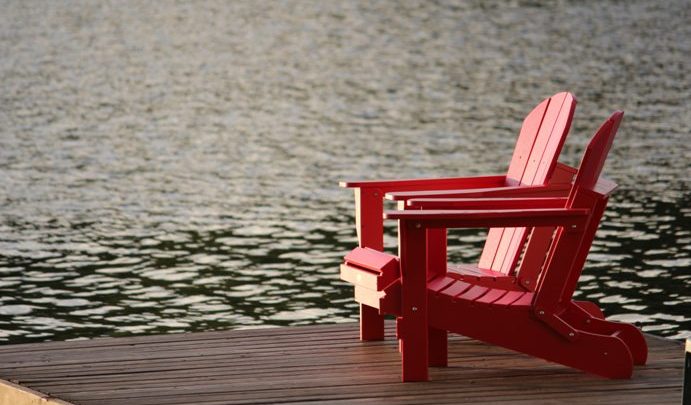Public Health Advisories for many Kansas Lakes due to Blue-Green Algae
No lakes in immediate area effected . . . .

If you’re traveling into the state of Kansas for the holiday, be advised that the Kansas Department of Health and Environment (KDHE) and the Kansas Department of Wildlife and Parks (KDWP) have issued several public health advisories for Kansas lakes due to blue-green algae.
A harmful algal bloom (HAB) may look like foam, scum or paint floating on the water and be colored blue, bright green, brown or red. Blooms can develop rapidly; if the water appears suspicious or there is decaying algae on the shore, avoid contact and keep dogs away.
These toxins can be absorbed by ingestion, inhalation of aerosols and even skin contact. Symptoms vary depending upon the type of exposure (e.g. direct contact, ingestion, inhalation) but can include rash, vomiting, diarrhea, fever, sore throat, and headache. If you, or your dog, come into contact with algae rinse the area with clean, fresh water.
None of the lakes effect the immediate KZRG listening area but the problem exists in numerous Kansas counties.
Active Advisories
Warning
Carbondale City Lake (Strowbridge), Osage County
Colwich City Lake, Sedgwick County (Added on September 2)
Crystal Lake, Anderson County
Ford County Lake, Ford County
Gathering Pond, Geary County
Hain SFL, Ford County
Jerry Ivey Pond, Saline County
Kingston Lake, Johnson County (Added on September 2)
Melvern Outlet (River) Pond, Osage County
Milford Lake Zone C, Geary and Clay County
Rooks County SFL, Rooks County (Added on September 2)
Summercrest Lake, Johnson County
Watch
Lake Scott State Park, Scott County
Louisburg Old Lake (City Lake), Miami County (Lowered on September 2)
Marion Reservoir, Marion County
Milford Lake Zone A, Dickinson and Geary Counties (Added on September 2)
Milford Lake Zone B, Geary County (Added on September 2)
Overbrook City Lake, Osage County
A Warning status indicates that conditions are unsafe for human and pet exposure. Contact with the waterbody should be avoided.
When a warning is issued, KDHE recommends the following precautions be taken:
- Lake water is not safe to drink for pets or livestock.
- Lake water, regardless of blue-green algae status, should never be consumed by humans.
- Water contact should be avoided.
- Fish may be eaten if they are rinsed with clean water and only the fillet portion is consumed, while all other parts are discarded.
- Do not allow pets to eat dried algae.
- If lake water contacts skin, wash with clean water as soon as possible.
- Avoid areas of visible algae accumulation.
A Watch status means that blue-green algae have been detected and a harmful algal bloom is present or likely to develop. People are encouraged to avoid areas of algae accumulation and keep pets and livestock away from the water.
During the watch status, KDHE recommends the following precautions be taken:
- Signage will be posted at all public access locations.
- Water may be unsafe for humans/animals.
- Avoid areas of algae accumulation and do not let people/pets eat dried algae or drink contaminated water.
- Swimming, wading, skiing and jet skiing are discouraged near visible blooms.
- Boating and fishing are safe. However, inhalation of the spray may affect some individuals. Avoid direct contact with water, and wash with clean water after any contact.
- Clean fish well with potable water and eat fillet portion only.
KDHE investigates publicly-accessible bodies of water for blue-green algae when the agency receives reports of potential algae blooms in Kansas lakes. Based on credible field observation and sampling results, KDHE reports on potentially harmful conditions.
If you observe a scum or paint-like surface on the water, small floating blue-green clumps or filaments in the water, or if the water is an opaque green, avoid contact and keep pets away. These are indications that a harmful bloom may be present. Pet owners should be aware that animals that swim in or drink water affected by a harmful algal bloom or eat dried algae along the shore may become seriously ill or die.
For information on blue-green algae and reporting potential harmful algal blooms, please visit https://www.kdhe.ks.gov/HAB.
###



